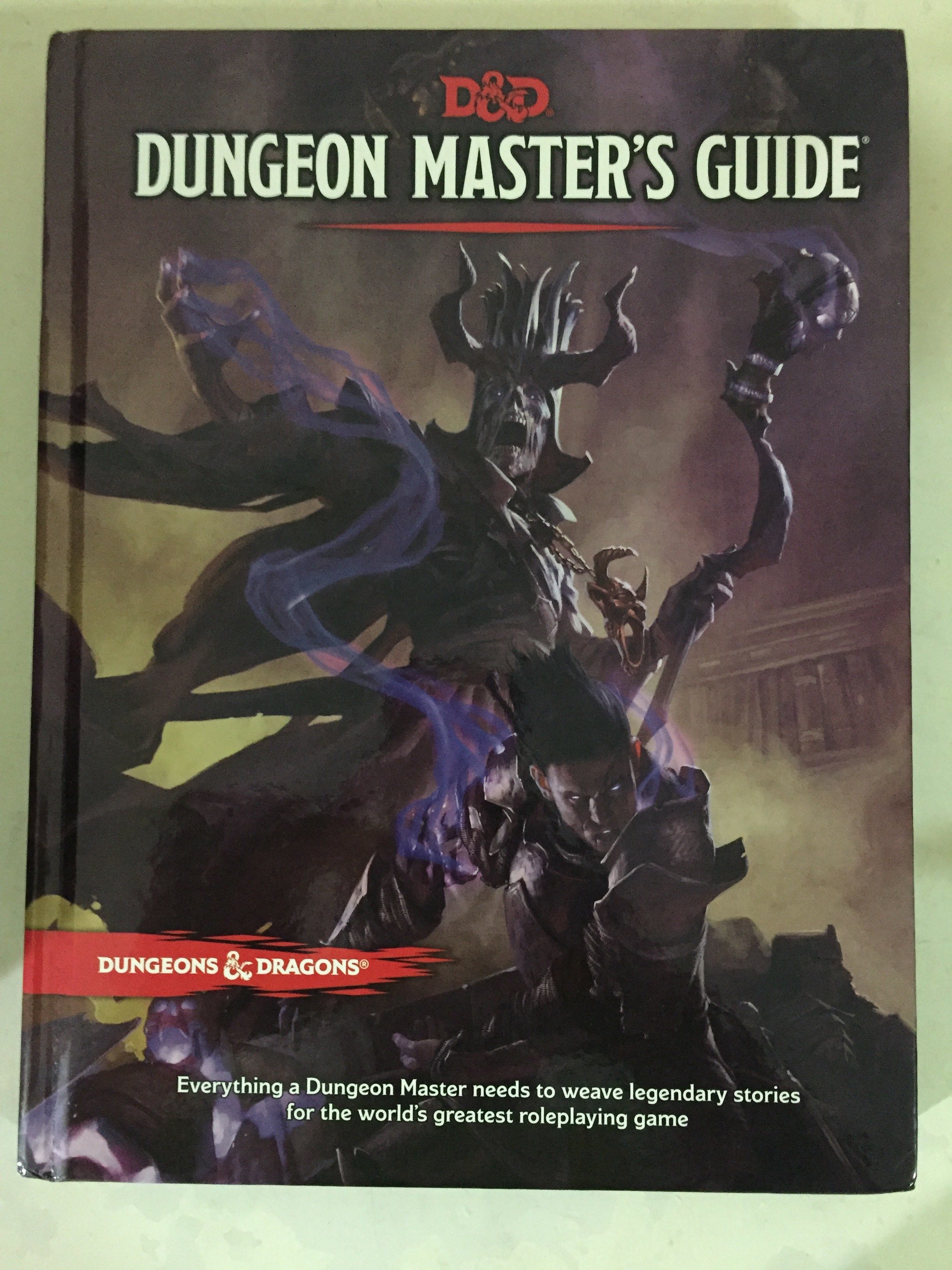
Should you buy this book? Yes!!! Or wait for the inevitable giftset with the Dungeon Master’s Guide and the Monster Manual.
Should you buy this book for a friend? If he or she is a Dungeon Master, or even a game designer, most definitely.
“Dungeon Master’s Guide” by Wizards of the Coast (the guys who made Magic cards, and are now owned by… dadum, Hasbro!) is the third in a series of core rulebooks for the new edition of the Dungeons & Dragons game (which is the 5th edition). The “Monster Manual” is book two, but I like to read that last, even though that’s the book that first brought me into the game.
If you’re not a gamer, don’t run away yet! I’ll quickly explain what Dungeons & Dragons is. It’s a cross between a computer game and interactive storytelling, except it’s all done via pen, paper (and calculators) plus some dice. A human, the Dungeon Master, facilitates the game and acts as the “computer” in terms of what happens next and if your Fireball spell hits. However, it’s much broader than a computer game because you can do anything that you can describe, within reasonable limits (so there are no impassable little mounds, like in Final Fantasy). There needs to be an element of luck in whether your attacks or actions succeed, so that’s what the dice are for.
So just as there are multiple versions of iOS, so there are newer editions of Dungeons & Dragons. More efficient (and fun) ways are found to play the game, and over time all these changes are accumulated to sufficiently overhaul and update the game’s rules. But for a more lengthy explanation, check out my Player’s Handbook review.
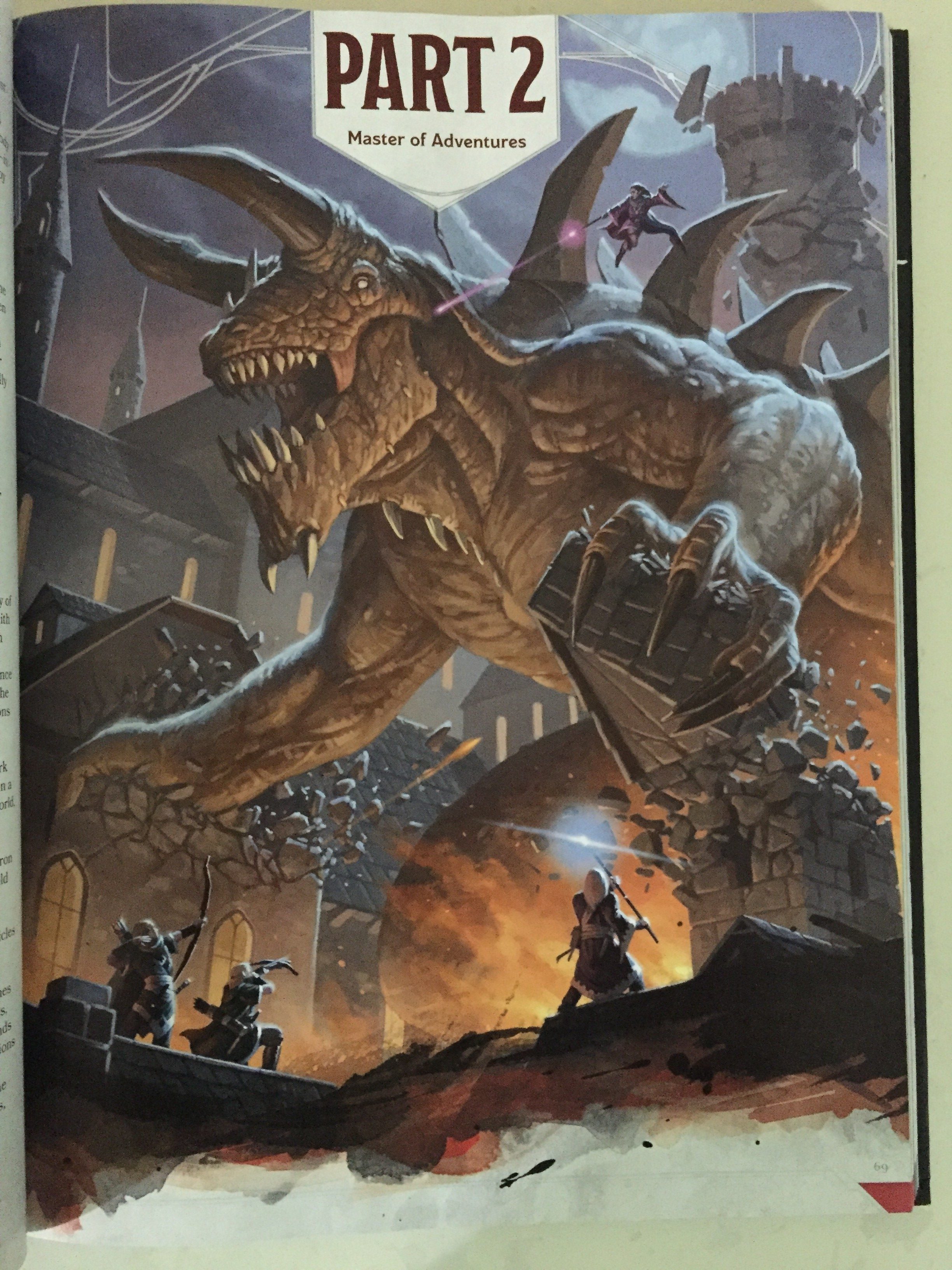
So what’s the Dungeon Master’s Guide for? Well, remember that it’s like a computer game/interactive story? There are usually 4-5 players, but you need an arbiter to be the “computer” for the game/story. That’s the Dungeon Master. He or she (I’ll just use “he” from now on because I’m really actually thinking of myself when I talk about the Dungeon Master) sets up and controls the monsters, creates the story, and determines what happens after the players blow up the evil wizard’s Fortress of Reckoning. He’s the “master” of the “dungeon” and hence, there’s an entire book named after him.
While the Player’s Handbook shows the players what they can do, in terms of races and classes to play and the abilities they wield, the Dungeon Master’s Guide is here to give Dungeon Masters the story options needed to run the game. The monsters are stored in the Monster Manual, but how they got there and what they want to do next is what the Dungeon Master’s Guide is for. There’s also all the magic items you could want in the book, as well as information about the cosmology of the Dungeon & Dragons universe.
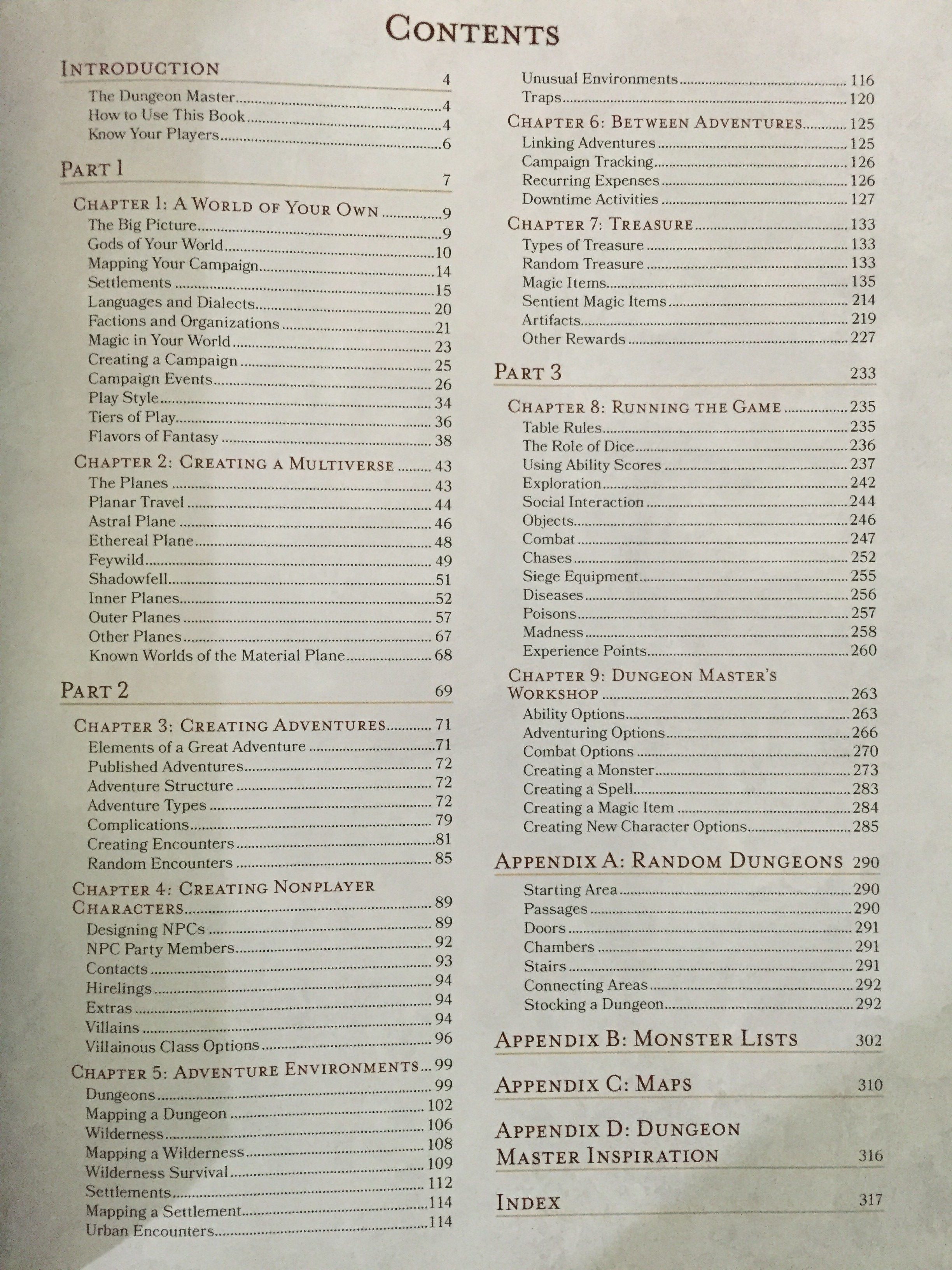
Highlights
Focus on storytelling
While previous Dungeon Master’s Guides have kind given rules to cover as many bases as possible, with the idea that there’s a “right” and “wrong” way to resolve non-standard conflicts, here the focus is on story, rather than rules. The book even calls it out as such, and says that you can rule auto-success or auto-failure as per your requirements. There’s no nagging feeling that if you did it wrongly, you’re breaking the rules. Rather, it seeks to make sure that you give a good experience to everyone at the table, even if it means sacrificing/changing/ignoring the rules. That’s a really co-operative attitude to take with players, and a reflection of modern gaming styles.
Empowers the Dungeon Master
The book also comes straight out and says that the Dungeon Master can overrule anything. It keeps emphasising that it’s your game, and so you can do whatever you want with. This instils a sense of ownership and pride in the your homebrew world, and is encouraging for new Dungeon Masters, who need all the support they can get. It’s not that the Dungeon Master is always right, but that this is your creation, and here are our suggestions, but you can do whatever you deem fit.
Reading lists
I don’t recall there being reading lists in previous books (then again they were written in a very textbook style, so I might not have noticed) but there are here. It looks like good stuff too, because a good number of suggested readings are the very same books that I use for scriptwriting and better storytelling. In the end, you want a memorable tale that will last for generations, so why not learn from those who tell stories for a living?
Evocative language
One thing about the new edition is the language used. Instead of being very mechanical about it, the rules are written in a very inspirational way. It adds options rather than restrictions when it comes to how the game works. And the actual language itself evokes fantastic battles and wondrous journeys. It’s less concerned about quantifying every single thing and whether or not it gives you a bonus or has hp, but about amazing ideas that act as a springboard into your own creative campaign world.
Magic items are special again
I like the rules for sentient magic items, and the randomly beneficial and harmful properties. I’m usuallynot a fan of random tables, but in this case it really helps to differentiate magical items, especially if two people have a magic item that has the same function. They can be customised to behave very differently, but still have the same support/combat function that you acquired it for. Also, the magic weapons are now not necessarily fixed to a certain weapon type! The weapon type can vary as per your needs (rather than a flametongue always having to be a sword, for instances).
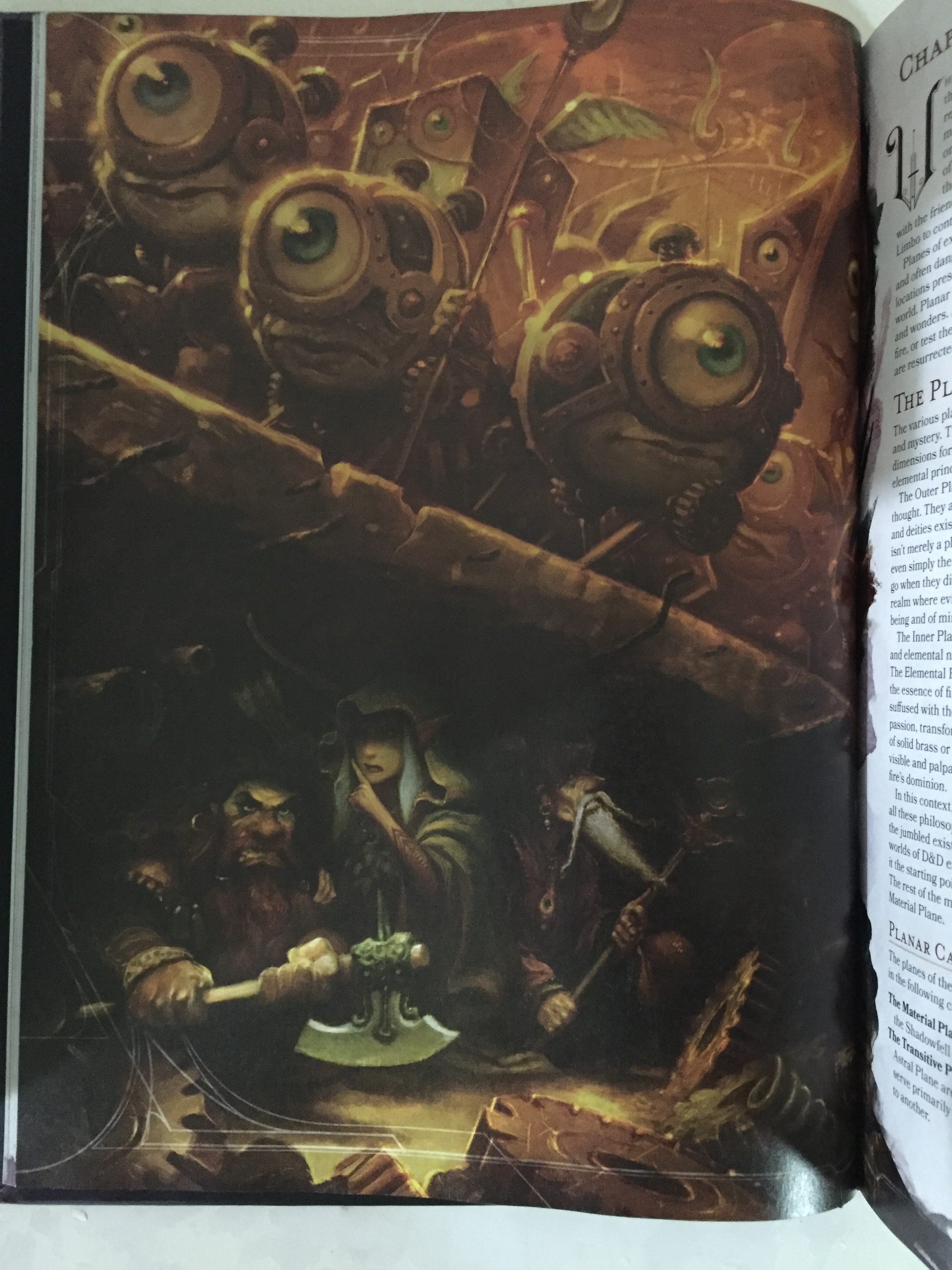
Letdowns
Lack of epic options
OI’m sad that when you get to epic level, all you get are boons. It sort of worked that way in the previous editions of the game (or at least 3rd Edition), but I was kind of hoping for epic progression tables for the characters. Monsters can go up to CR (or level) 30, so why can’t classes? I mean, you can extrapolate from the tables provided, what with the Proficiency Bonuses following a set mathematical formula and all. All you’d need are more abilities, and that’s more exciting crunch I would have liked go see and use.
Lack of alternate class options
I only say this because it would have helped to give a beefier guide on how to modify your own classes. Or maybe even a modern-themed class. Most classes are fixed to an extent (depending on what major decisions you make in your class progression), and some new Dungeon Masters might want to fiddle around with those options. Why not give some options and show them more concrete examples of how it’s done? It’s not like they won’t try to if you don’t have it in the toolbox.
Do people really roll random dungeons/encounters these days?
There are a large number of random tables which feel like a throwback to older editions. I really don’t know who uses random encounter tables, although for some random tables, the selections are pretty interesting. Even so, random monsters are not as easy to manage as in a video game, so make every battle count! Don’t have me fight boring orcs, that time could be used to let me duel with Crogar the Pig-Slicer who wants to slaughter all pigs!
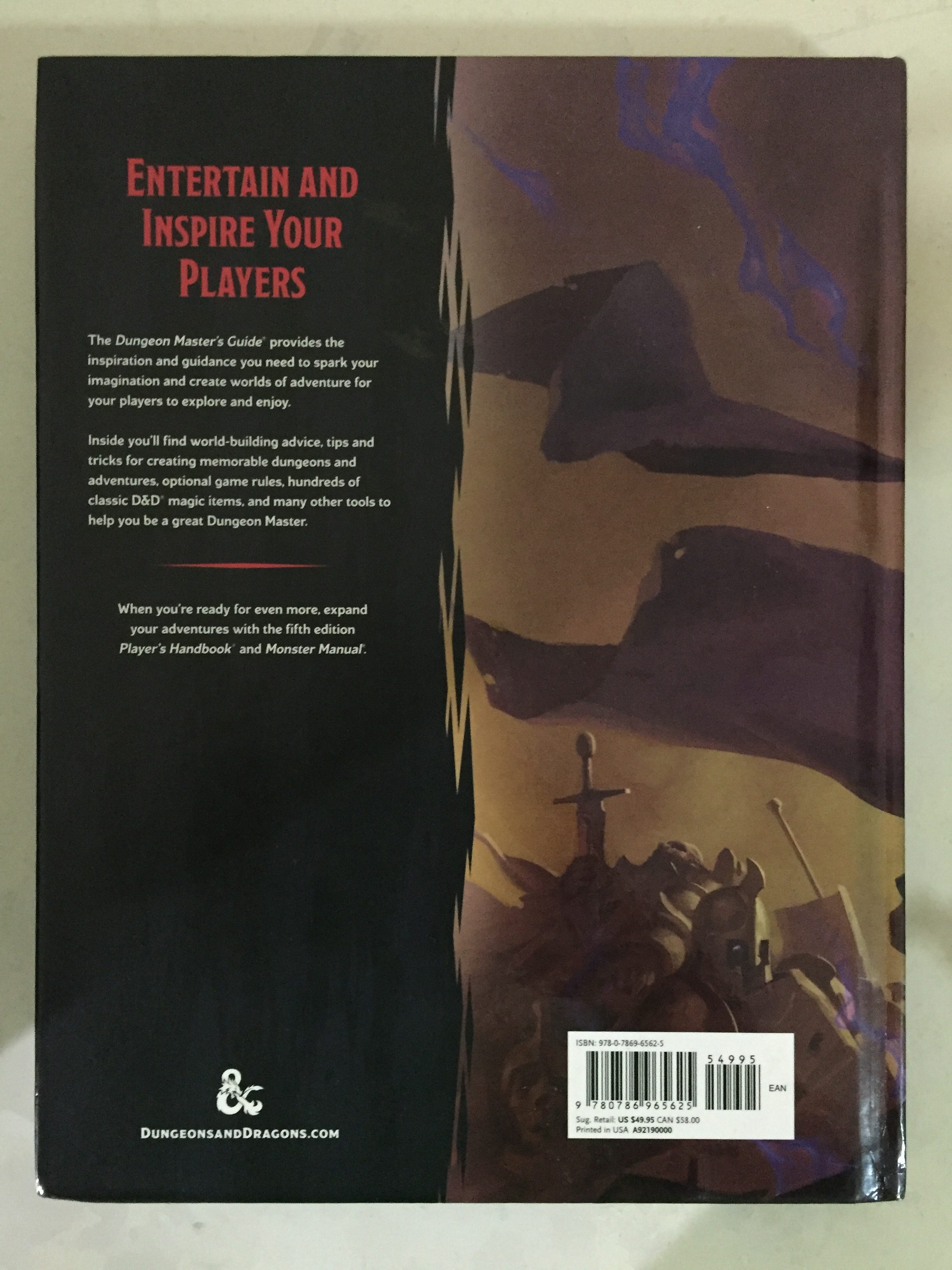
Dungeon Master’s Guide is an amazing book that just has you bursting with evil plots to spring on your players. Each turn of the page generates a new idea for you, and with the basic ruling that the Dungeon Master is always right, you can finally tell the stories you’ve always wanted to tell, and have them play out the way you wanted them to.
Previous Dungeons & Dragons, 5th Edition Reviews
Leave a Reply